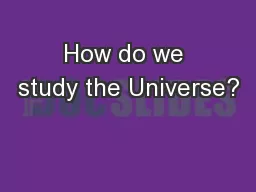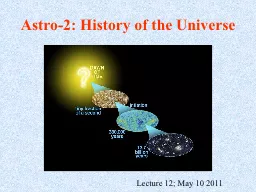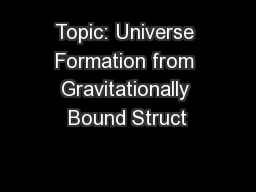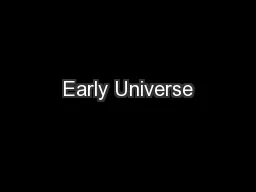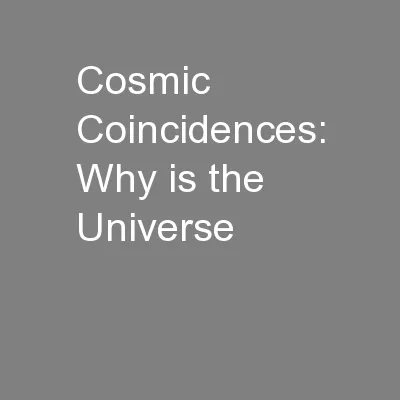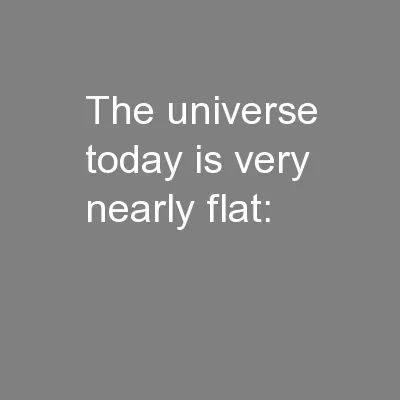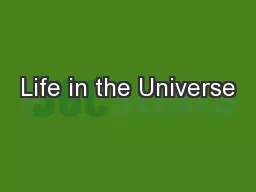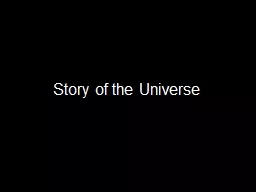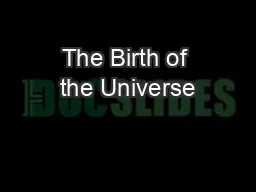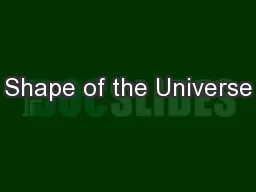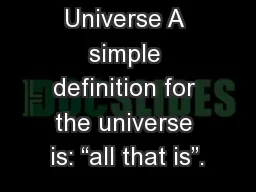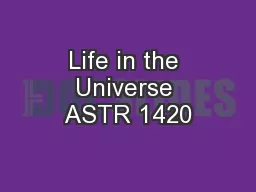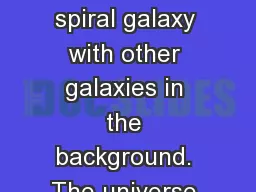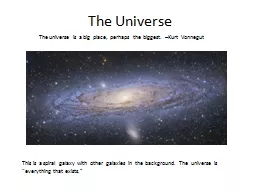PPT-How do we study the Universe?
Author : tawny-fly | Published Date : 2018-09-29
SPECTROSCOPY Uses visible wavelength split into colors Doppler shift Wavelengths change when object is moving Red Blue Shift RECEDING moving away objects show a
Presentation Embed Code
Download Presentation
Download Presentation The PPT/PDF document "How do we study the Universe?" is the property of its rightful owner. Permission is granted to download and print the materials on this website for personal, non-commercial use only, and to display it on your personal computer provided you do not modify the materials and that you retain all copyright notices contained in the materials. By downloading content from our website, you accept the terms of this agreement.
How do we study the Universe?: Transcript
Download Rules Of Document
"How do we study the Universe?"The content belongs to its owner. You may download and print it for personal use, without modification, and keep all copyright notices. By downloading, you agree to these terms.
Related Documents

